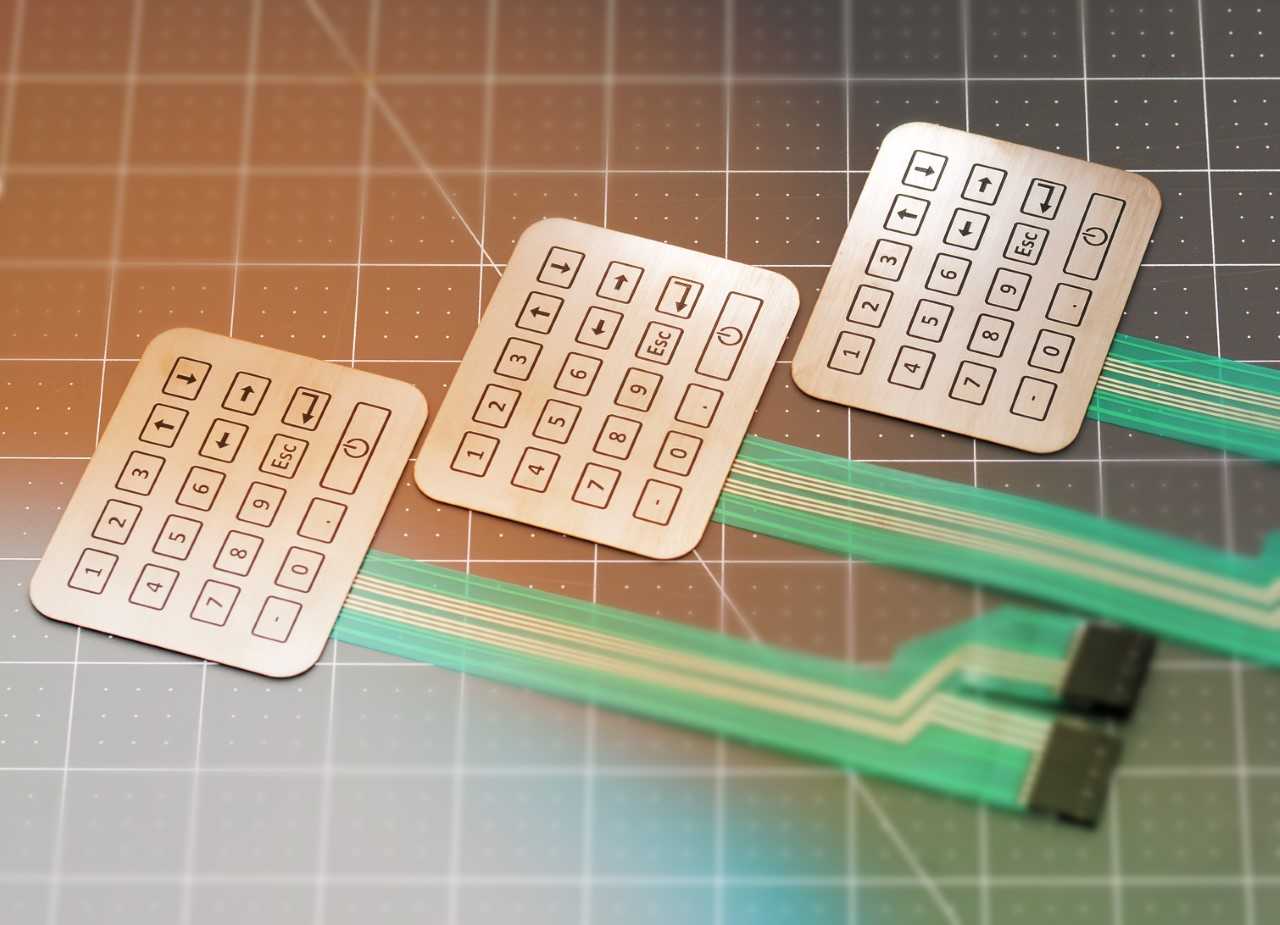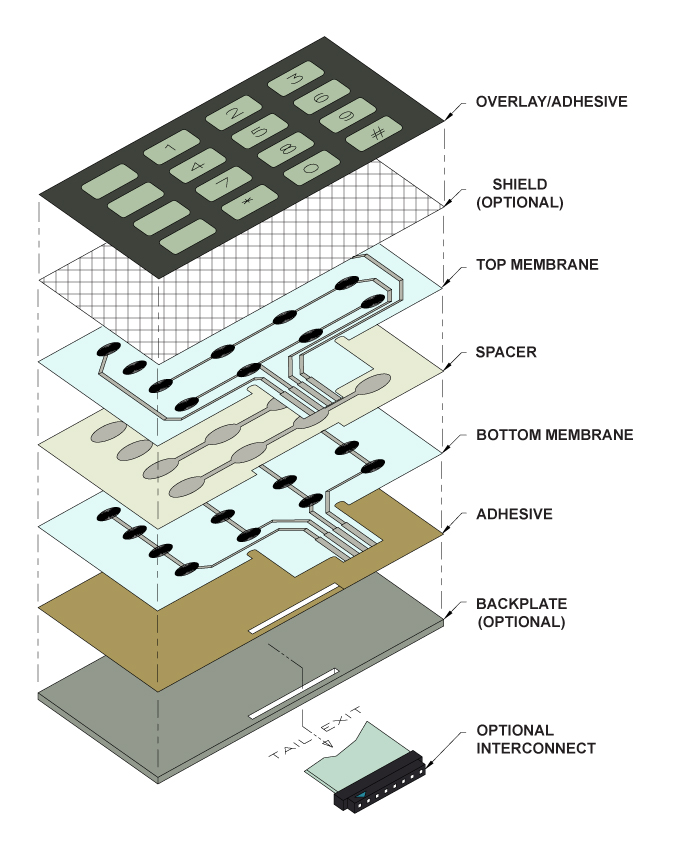Everything About Membrane Switch: Recognizing Its Style and Functionality
When you consider the control user interfaces in modern gadgets, membrane layer buttons commonly come to mind. These elements are greater than simply buttons; they mix layout and performance perfectly. Recognizing exactly how they work and what makes them reliable can transform your perspective on daily electronic devices. There are nuances to their design and efficiency that you could not be mindful of. Let's discover what collections membrane layer switches in addition to various other control systems.
What Are Membrane Switches?

Their smooth nature makes them simple to clean and immune to dirt and wetness, a crucial function in lots of environments. Membrane layer buttons can also be tailored regarding form, dimension, and graphics, permitting manufacturers to create unique user interfaces tailored to particular products. And also, they're light-weight and slim, which aids in minimizing the overall bulk of devices. Overall, membrane layer switches play a significant function in improving customer experience across a broad range of applications.
Exactly How Membrane Changes Job
When you push a trick on a membrane button, it turns on an uncomplicated yet efficient mechanism. The leading layer, usually constructed from versatile product, presses down onto a conductive layer below it. This action bridges the gap between conductive traces, completing an electrical circuit. As soon as the circuit closes, it sends a signal to the device's controller, which interprets your input.
You'll notice that the tactile responses varies based on the switch style, using either a soft click or a more noticable reaction. When you release the key, the membrane layer returns to its initial setting, resuming the circuit and stopping the signal. This procedure happens virtually immediately, making certain a responsive customer experience.
Membrane layer switches are prominent because of their longevity and resistance to dirt and dampness, making them ideal for various applications, from family devices to clinical tools. Understanding this procedure aids you value their prevalent usage.
Trick Parts of Membrane Layer Buttons
Understanding the vital components of membrane switches is essential for grasping their functionality and style. At the core, you'll discover the visuals overlay, which gives the aesthetic user interface for customers. Underneath that, there's a spacer layer that separates the circuit layers, making sure that they do not make call till pushed. The circuit layer is where the magic takes place; it is composed of conductive traces that finish the circuit when you push the switch. One more necessary element is the sticky backing, allowing the switch to stick to surface areas safely. The safety layer shields against ecological variables and wear, extending the button's life expectancy. Each element plays a significant role in guaranteeing reputable performance and user interaction. By understanding these components, you'll gain insight right into just how membrane changes run and their value in different applications.
Products Used in Membrane Switch Design
The efficiency and resilience of membrane layer switches over heavily depend on the materials made use of in their style. You commonly run into polyester and polycarbonate as primary substrates as a result of their superb stamina and adaptability. These materials resist scratches and chemicals, making them perfect for requiring atmospheres.
The conductive layers typically use silver or my company carbon, chosen for their dependability and conductivity. membrane switch manufacturer. Silver offers exceptional efficiency, while carbon is an affordable option. For the overlay, you may take into consideration a matte or glossy finish, depending upon your aesthetic needs and individual experience
Adhesives play a vital function as well; they bond layers safely and ensure longevity. Make sure to select adhesives that withstand ecological elements like temperature level and moisture. Do not ignore the value of a great printing method for graphics, as it improves both performance and visual appeal. Picking the best materials will guarantee your membrane layer button stands the test of time.
Design Considerations for Membrane Buttons
While developing membrane layer switches, it's important to take into account different elements that affect their functionality and customer experience. Begin by concentrating on the layout and button dimension; make particular they're user-friendly and easy to browse.
Do not ignore the visuals design; clear labeling and shade comparison are substantial for presence. Confirm your style fits ecological factors, like wetness or temperature level variations, which might impact performance. Ultimately, keep in mind the relevance of testing prototypes with real customers to gather feedback and make required adjustments. This iterative process assists you fine-tune the style, verifying it meets both practical and aesthetic requirements properly. By thoroughly thinking about these aspects, you'll produce a membrane layer button that enhances usability and contentment.
Applications of Membrane Layer Buttons
Membrane buttons are functional elements discovered in various applications, from commercial equipment to consumer electronic devices. You'll see their influence in makers that need resilient user interfaces and in gadgets that benefit from sleek styles. Understanding these applications assists you value the capability and practicality of membrane layer switches in daily technology.
Industrial Tools Usage
When you're wanting to enhance the functionality of industrial equipment, membrane switches provide a trustworthy option that combines resilience with user-friendly design. These buttons are excellent for severe settings, offering resistance to dirt, wetness, and chemicals. You'll locate them in control panels for producing machines, HVAC systems, and medical tools, where accuracy and responsiveness are crucial. Their low account indicates they fit seamlessly right into various equipment, conserving valuable area while preserving ease of Learn More use. With adjustable graphics and backlighting alternatives, you can create an user-friendly user interface for operators, boosting efficiency and security. And also, their long life expectancy decreases maintenance prices, making them a clever investment for your commercial applications. Embrace membrane layer buttons to simplify your procedures and enhance general efficiency.
Consumer Electronics Integration
In the domain name of customer electronic devices, membrane layer buttons play a necessary function in boosting individual interaction and tool functionality. Membrane layer switches likewise assure resilience and resistance to dust and wetness, expanding the life-span of your electronics. By selecting membrane buttons, you enhance not simply the capability however also the style of your tools, making day-to-day interactions smooth and satisfying.
Advantages and Disadvantages of Membrane Layer Switches
While membrane switches supply an array of advantages, they also come with some downsides that you ought to think about. One considerable benefit is their compact style, making them suitable for space-constrained applications. They're additionally affordable, offering a durable option with a low production price. Furthermore, their seamless surface is simple to tidy, enhancing hygiene in environments like hospitals.

Membrane layer switches can have a much shorter life-span contrasted to mechanical buttons, specifically under heavy usage. They can likewise be much less responsive, which may influence individual comments during procedure. Balancing these pros and disadvantages will help you determine if membrane layer switches are the ideal fit for your project.
Often Asked Inquiries
For How Long Do Membrane Switches Over Typically Last?
Membrane changes commonly last in between 5 to ten years, depending on use and environmental problems. You'll wish to evaluate aspects like wear, exposure to wetness, and temperature level fluctuations to assess their long life successfully.
Can Membrane Layer Switches Over Be Customized for Certain Designs?
Yes, you can customize membrane layer buttons to fit particular layouts (membrane switch manufacturer). You'll have the freedom to select colors, forms, and designs that match your project's demands, ensuring they mix seamlessly with your total visual
What Is the Price Range for Membrane Switch Manufacturing?
The cost variety for membrane layer button manufacturing usually falls in between $1 and $10 each, relying on variables like layout complexity, quantity, and get more materials. You can get quotes from makers to discover the most effective option.

Are Membrane Changes Water Resistant or Immune?
Membrane switches can be designed to be water resistant or resistant, relying on materials used and construction techniques. If you need them for damp environments, ensure you define those requirements throughout the design procedure.
How Do Membrane Changes Contrast to Standard Buttons?
Membrane buttons are normally thinner and a lot more versatile than typical switches, providing a smooth design. They're typically simpler to clean up and incorporate, but may not supply the tactile comments you're made use of to with mechanical alternatives.
Final thought
